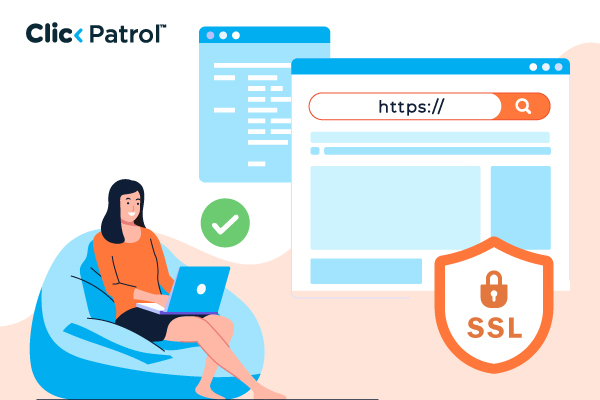A bad print ad cannot deliver its message, is not beautiful, or offends its readers, leading to negative interaction and potential brand damage.
Bad print ads: 6 common mistakes that damage brands and how to fix them
Abisola Tanzako | Jun 04, 2025

Table of Contents
- What are print ads?
- What are bad print ads, and what are their characteristics?
- Cluttered layout: Trying to say too much at once
- Unclear or vague messaging
- Poor typography and font choices
- Low-quality images or visuals
- Flawed or missing call to action (CTA)
- Offensive or tone-deaf messaging
- Real-world examples of bad print advertisements
- Best practices for effective print Ad design
- Do not let bad print ads harm your brand
Print advertising still works, and the numbers prove it. In 2025, global print ad spending is projected to hit $32.58 billion, with a brand recall rate of 90%, the highest among all media.
Nearly 80% of consumers act on print ads immediately, compared to just 45% for digital ads. But impact depends on execution. Bad print ads can backfire, damaging your brand instead of building it.
56% of consumers say bad design lowers their perception of a brand (Nielsen). This guide identifies six common mistakes in print ad design and messaging and provides practical tips for addressing them.
What are print ads?
Print ads are advertisements that are published on physical materials such as newspapers, magazines, brochures, flyers, posters, and billboards.
They have been a traditional, conventional marketing method that aims to target specific groups of people through physical media. Common types of print advertisements include:
- Newspaper advertisements
- Magazine advertisements
- Flyers
- Billboards
- Direct mailings
- Brochures. Each is reserved for a specific use: newspapers and magazines to reach mass audiences or specialist readers, and flyers and brochures to target specific areas or demographics. Billboards are outdoor, huge-format advertisements created for optimum exposure.
Advantages:
- Physical and authentic: Physical advertisements are typically perceived as more authentic than online advertisements.
- Targeted reach: Print advertising allows advertisers to reach specific audiences based on the publication’s content.
- More prolonged exposure: Print media, such as magazines or brochures, can be kept for a more extended period, allowing for repeated views.
Disadvantages:
- Increased production and distribution costs.
- Less space for messages.
- More challenging to measure results compared to digital campaigns.
What are bad print ads, and what are their characteristics?
Bad print ads fail to effectively communicate the intended message to the target audience or elicit the desired behaviors. Such ads typically contain inconsiderate design, conflicting messages, or tone-insensitive content, rendering them useless or damaging the brand’s reputation.
Cluttered layout: Trying to say too much at once
You have likely seen it before: an ad packed with text, graphics, and logos that is hard to figure out what it is about. An example is a local house flyer that displays ten houses, utilizing four fonts and small text, all crammed onto one A4 page.
Why is it a problem?
- Viewers are often overwhelmed and scroll past it.
- Essential messages get lost in the visual noise.
- The ad looks amateur and unfocused.
What to do instead:
- Stick to one main idea per ad.
- Employ white space intentionally: it directs the eye to significant content.
- Create your ad as a dialogue: include a headline, a benefit, and a call to action.
Unclear or vague messaging
If people cannot determine what your ad is promising in 5 seconds, they are gone. Newspaper commercials with unclear jingles or that are too clever by half fail.
An example is a tech company ad with the slogan “Reimagining the future of synergy.” Sounds cool, but what is it?
Why is it a problem?
- No value proposition is clear.
- The audience has no idea what to do or why they should care.
- Adds to the risk of brand confusion or misunderstanding.
What to do instead:
- Use plain, compelling language.
- Highlight one specific advantage to the customer.
- Use imagery with context or subheadings where necessary.
Poor typography and font choices
Fonts make or mar your ad. Poor typography confuses the reader; the mixed legibility seems unprofessional.
Why is it a problem?
- Unreadable copy means lost attention.
- The mixed use of fonts is eroding the brand image.
- It can look old or cheap.
What to do instead:
- Choose two complementary fonts at most: a headline font and a body text font.
- Use contrasting colors and proportional sizes.
- Avoid novelty fonts like Comic Sans, Papyrus, or Curlz MT.
Low-quality images or visuals
A great ad is often built around a compelling image. A low-resolution, poorly cropped, or off-topic image can kill your ad’s potential. For example, a fashion ad with blurry clothing pictures and low-light settings immediately erodes trust in product quality.
Why is it a problem?
- Pixelated or stretched-out images often indicate a lack of professionalism.
- Misaligned visuals muddle the message.
- Viewers may question your credibility.
What to do instead:
- Use good-quality pictures (at least 300 DPI for print).
- Match the images to your brand tone and message.
- Commission a designer or licensed stock photos if necessary.
Flawed or missing call to action (CTA)
An ad without a call to action is like an interstate highway without signs; you are going nowhere. Not much will get done if you do not tell someone what to do next.
A good CTA Example is: “Visit our showroom this weekend and receive 20% off all furniture—no coupon needed!”
Why is it a problem?
- No direction to go = no conversions.
- Lost opportunity to create customer relationships.
- Viewers may care but have no clue what to do next.
What to do instead:
- Use bold, commanding call-to-actions (CTAs): “Call Now,” “Visit Today,” or “Scan to Save.”
- Display it prominently (in a larger size, with bold color).
- Use deadlines or rewards when possible.
Offensive or tone-deaf messaging
Some print ads go viral for all the wrong reasons: they are insensitive, outdated, or culturally insensitive. Overextending a joke or using inapt wording can turn off whole customer segments.
An example is a clothing advertisement that implied certain sizes were not “attractive,” resulting in public outcry and boycotts.
Why is it a problem?
- It damages the brand’s reputation, sometimes even more severely than that.
- Creates negative publicity and backlash.
- Shows a lack of cultural or audience sensitivity.
What to do instead:
- Test the messaging with diverse audiences before publishing.
- Avoid stereotyping or using clichés or humor that could be misinterpreted.
- Always ask yourself, would this offend or alienate someone in our audience?
Real-world examples of bad print advertisements
Virgin Media: Misleading Broadband Ad
Virgin Media received a warning from the UK Advertising Standards Authority in 2012 regarding its fine-printed broadband advertisement, which was deemed to affect consumer readability.
The ASA found the advertisement misleading because it failed to uphold proper transparency standards in advertising.
Electrolux: “Nothing Sucks Like an Electrolux”
When Electrolux introduced its vacuum cleaners to the market during the 1970s, it used the slogan “Nothing sucks like an Electrolux” to demonstrate the strength of its vacuum suction capabilities.
The usage of “sucks” in English markets is confusing because the term has a negative meaning, thus generating unintended comedic results.
Best practices for effective print Ad design
Best practices for effective print Ad design include:
- Clarity: Keep the advertisement’s message concise and easy to understand.
- Design consistency: A consistent visual presentation aligns with your brand image.
- Audience awareness: Tailor the content and images of the advertisement to be attractive to the target audience.
- Proofreading: Review very carefully for spelling and grammatical errors to project professionalism.
Do not let bad print ads harm your brand
As we have learned, ineffective print ads, whether cluttered, confusing, poorly written, or tone-deaf, represent a waste of valuable marketing dollars and harm your reputation, deterring your target audience.
By avoiding these all-too-common traps and adhering to best practices such as clean copy, high-quality images, strong call-to-action (CTA) elements, and cultural awareness, you can transform your print ads into high-performing, engaging assets that drive results and build brand awareness.
Frequently Asked Questions
-
What is a bad print ad?
-
What are the most effective ways to gauge the effectiveness of a print ad?
Track response rates through promo codes, distinctive phone numbers, or landing pages referred to in the advertisement.
-
Is print advertising still relevant in the digital era?
Yes, print ads can effectively target particular audiences and provide them with a tangible brand experience that online ads cannot.






